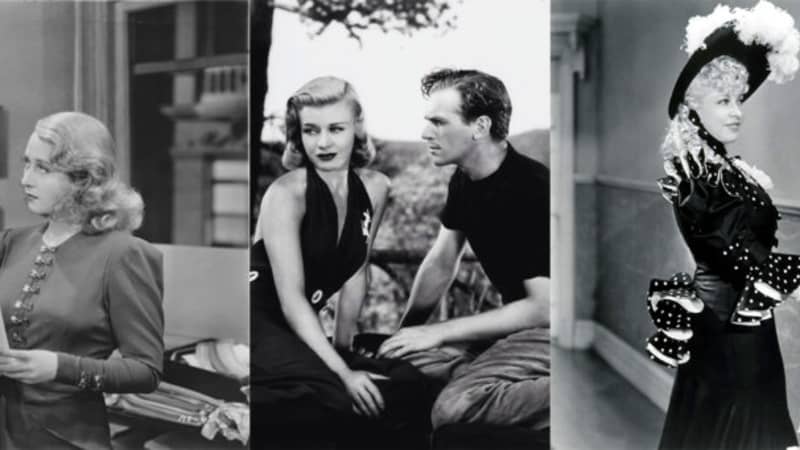Skintight:
“Gold Diggers” Frauds or Icons?
Posted on: July 30, 2018
Upon learning that Elliot’s new partner is a 20-year-old named Trey, Jodi and Benjamin immediately mistrust his motives. Trey swears that he loves Elliot regardless of their difference in age, but Jodi and Benjamin are convinced that Trey is only after Elliot for his money and lavish gifts. Trey’s role in this play may seem familiar -- his storyline draws from the archetype of the Gold Digger, traditionally portrayed in literature, film, and music as a young woman who dates or marries rich men for their money alone. As a young man rather than a young woman, Trey is an inversion of the traditional type, but the implications of calling him a gold digger remain much the same. The term is used colloquially today in a generally derogatory manner against those who are seen as dating only for mercenary purposes, but the history of the phrase has more folds than one might think.

Jack Wetherall and Will Brittain as Elliot and Trey in "Skintight"
Joan MarcusThe phrase “gold digger” was popularized by Avery Hopwood’s play The Gold Diggers, which premiered at the Lyceum Theatre on Broadway in 1919 and depicted the young women of its story as sly and cunning seductresses of rich men. Though Hopwood’s gold diggers often outwitted their male counterparts, their ultimate motives didn’t get much more complex than a superficial hunger for wealth and luxury. The play, though itself relatively sympathetic toward its gold digger characters, spawned a decade of storylines that portrayed gold diggers as unscrupulous pleasure-seekers who needed to be reformed into demure housewives. In the early 1930s, though, the gold diggers of film and theatre became the heroines of stories in which they deftly outsmarted rich businessmen, whom the nation had come to villainize with the advent of the Great Depression. Audiences cheered actresses such as Joan Blondell, Ginger Rogers, and Mae West, whose characters, struggling through poverty, gamed an unjust system in pursuit of basic necessities and respect.
In the second half of the 1930s, Hollywood tightened enforcement of its Motion Picture Production Code, which set the standards for what could and could not be shown on film. Heightened censorship led filmmakers to revert back to storylines in which gold-digging women who broke the “moral code” were punished rather than glorified. With some exceptions, the films of the late 1930s largely condemned gold diggers -- an attitude that pervaded American culture and even led some cities to adopt actual laws prohibiting gold-digging behavior.

In the decades since Hollywood’s Depression-era censorship code, the gold digger icon never regained the heroism of those early-1930s mavericks. From hit movies like Gentlemen Prefer Blondes (1953) and Some Like It Hot (1959) to top songs like “Lyin’ Eyes” by The Eagles (1975) and “Gold Digger” by Kanye West (2005), the gold digger archetype has been portrayed only occasionally with sympathy and depth and almost never again as a street-smart rebel who emerges victorious over the upper class.
Even in 2018, the term “gold digger” generally connotes laziness, dishonesty, and fraud. But the origins of the trope reveal that there may be more to unpack from these characters than cultural assumptions might have us believe. Calling Trey a gold digger, then, might be a more complicated label than it seems.






